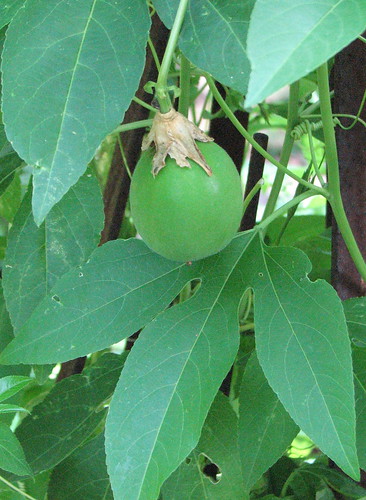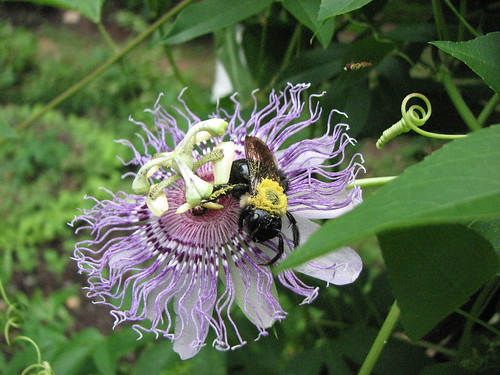How to Grow Passionfruit in the Backyard
If you’ve enjoyed passionfruit in exotic juice mixes or as a novel fruit from the produce section, you may be surprised at how easy it is to grow at home.

Photo Caption: Our native passionfruit is ripe when it turns yellow and slightly wrinkled, unlike the grocery store varieties that are ripe when purple and wrinkled. The flavor is almost identical.
The passionflower grown for commercial production is the South American species Passiflora edulis, but we have a local, native species that tastes just as good! Passiflora incarnata is not only native, it’s common! Many of us grew up playing with the unripe green fruits known as maypops. My family created herds of “cows” by affixing smaller fruits to larger ones (impaled on sticks) and using 4 additional twigs as legs.
If left to mature on the plant instead of harvested to create miniature bovine farms, the fruits will begin to yellow as they ripen. However, they aren’t ready to eat until they wrinkle heavily. This is when the inner pulp will develop an intoxicating fragrance and sweetness.
Unlike some slightly hardy southern wonders, our native passionflower can be grown all over the Appalachias, not just in the foothills. Amazingly, it is happy down to USDA zone 5.

Photo Caption: Even if they didn't produce delicious tropical fruit, passionflowers would be worth growing just for their fragrant exotic blooms.
The soft pulp is seedy but the taste is so intense that a single fruit can be used to flavor an entire recipe. Treat it like an extract or herb when using it in cooking. Mix the pulp in with your regular sweet tea recipe to make passionflower tea, replace the vanilla extract in a baking recipe with the strained juice, or mix it into your favorite jelly as you prepare it for canning. You can also eat passionfruit raw with a spoon – it is your choice whether you swallow the seeds or spit them out to plant more.
If you do use the seeds, make sure to plant them when they are still fresh. It is a good idea to store them in a ziplock bag inside the fridge until you are able to do so. Passionflower seeds die when you let them dry out, so you can’t store them in paper packets.
Another way to grow them is by transplanting a piece of the vine. I rescued my passionflower from a construction site near my house the day before it was bulldozed. The roots are fleshy, pale, and fragile, but they still transplant well. Bury them horizontally about 6″ deep and keep them well watered until they are established.
A third way to obtain a passionflower plant is through rooted cuttings. Passionflower vines will root in water or soil if kept moist near a sunny windowsill. Direct sun is not necessary until you plant them outdoors. Outside they prefer as much sun as you can give them. They will grow in shade but will not produce many flowers or fruits. Though they will grow in clay, they love loamy soil.
Once you have passionflowers growing in your yard you can expect them to expand into thickets of short, slightly clumsy vines. Unless you want to use them as a ground cover, have a trellis handy. Each vine tops out at about 5′ – 8′ depending on the growing conditions.
Passionflowers spread happily through underground runners and the birds will replant the seeds. Be sure to plant yours in a spot where you don’t mind them thriving. They do well in big pots if you need to save space. You’ll be rewarded by impossibly beautiful flowers and exotic tropical fruit.
4 thoughts on “How to Grow Passionfruit in the Backyard”
Comments are closed.

Aaron - September 15, 2009 12:41 am
Great post Aliza! These are Susan and my favorite native flowers. Absolutely stunning- delicate and intricate petal structure. The fruit is every bit as good as you say. Very tangy and unlike any other fruit I’ve ever tasted.
My mom’s come back year after year and spread (as you mentioned above). Are they perennials or are new plants growing from seed?
Sustainahillbilly
Twitter: appalachianfeet
- October 26, 2009 1:48 pm
They are perennials.
Donna Putney - October 27, 2009 11:41 am
Eliza Anne, This site is a fantastic accomplishment! I admire you for being willling and able to do this!
donna
Pingback: How to Get Fuzzy Bees Drunk | Appalachian Feet